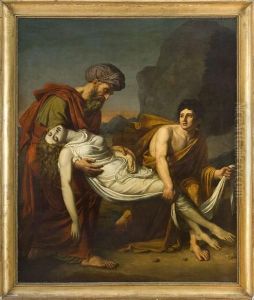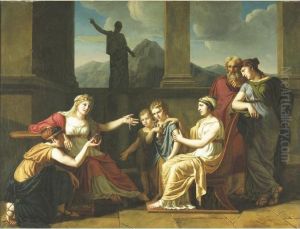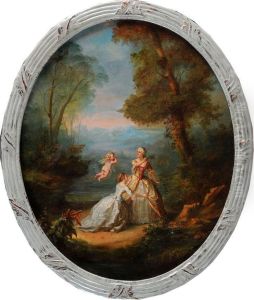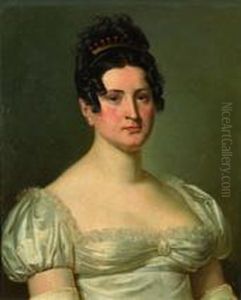Antoine Claude Fleury Paintings
Antoine Claude Fleury, whose life spanned from 1743 to 1822, was a French artist known for his contributions to the Rococo and Neoclassical styles, which were prominent during his lifetime. Born in the 18th century, at a time when the Rococo style was in vogue, Fleury developed his artistic skills during a period of significant transition in European art.
Fleury's early life and training would have been shaped by the cultural atmosphere of pre-revolutionary France, where he would have been exposed to the works of artists such as François Boucher and Jean-Honoré Fragonard. These artists were known for their ornate and decorative works, which were popular among the French aristocracy. However, as the century progressed, there was a shift away from the frivolity of Rococo to the more serious and classical elements of Neoclassicism.
During his career, Fleury would have witnessed the rise of Neoclassicism, a movement inspired by a renewed interest in the art and culture of ancient Greece and Rome. This was a time when artists like Jacques-Louis David were gaining prominence, and their influence would have been felt by Fleury in his own work. Despite the lack of extensive documentation on his personal life and training, it is likely that Fleury would have adapted his style to align with the Neoclassical aesthetic, which emphasized clarity, order, and symmetry, in contrast to the playful and elaborate Rococo.
Fleury's works, which are not widely known today, would have included traditional subjects such as historical scenes, portraits, and perhaps mythological themes, all treated with the refined draftsmanship and attention to detail characteristic of the period. His clientele would have been the French elite and, as with many artists of his time, he may have struggled with the changes brought about by the French Revolution in 1789.
After the Revolution, the art world in France changed dramatically, with the fall of the monarchy and the rise of the Napoleonic era. Art became a vehicle for political propaganda and public education, reflecting the tumultuous social changes of the time. Fleury's later works, if any survived the upheaval, would reflect the influences of these events. However, with his death in 1822, Fleury would have missed the full emergence of the Romantic movement, which would come to dominate the art scene after his passing. Today, Antoine Claude Fleury remains a relatively obscure figure in the history of French art, overshadowed by his more famous contemporaries. Nevertheless, his life and work provide insight into the rich tapestry of artistic development during one of the most dynamic periods in European art history.




